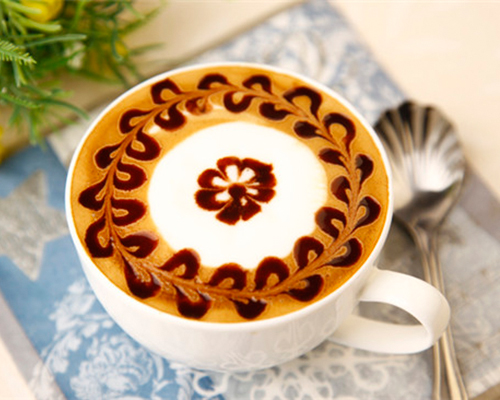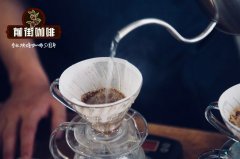What's so particular about the blending of Italian coffee beans? Can you not match it? How to match the proportion?
Professional coffee knowledge exchange more coffee bean information please follow the coffee workshop (Wechat official account cafe_style
What we're going to talk about is matching. Why commercial cafes use blended coffee beans, and why some bakers choose to use blended beans, while others don't. I will also talk about why blending has a poor reputation in the boutique coffee industry.
For a long time, "coffee" was made by default from a variety of beans. Some companies will name combinations after themselves, and many big companies will have a variety of combinations in a year, while the current boutique coffee industry prefers seasonal ones.
Many bean bakers' recipes are secret. Baking beans is like an art, and many legendary baking masters say it cannot be taught. They keep secret about the mix, and some don't even write down the formula to prevent it from being copied. I think this is very ridiculous, to put it bluntly, self-high. The coffee beans baked by many bean bakers seem to be a little different every week.
This also makes the idea that "matching can be perfectly copied and there will be a commercial threat" seems far-fetched.
Large baked bean merchant
The focus is probably not on serving high-quality boutique coffee users: illy, Starbucks.
What big bakers need is stable output in the face of huge market demand. In order to maintain superficial consistency, they will buy a variety of coffee beans in large quantities and then put them together to weaken (some of them) coffee bean flavor changes. The seasonal variation of the flavor of coffee beans is not the focus of consideration here, because there are many kinds of beans, they can change the blending ratio at any time to reduce this change. The disadvantage of this is that the mixed beans do not show obvious flavor characteristics. To be honest, if there are more than eight different coffee beans in a mix, the floral smell of Yega snow beans is completely insignificant.
Medium-sized bean baking merchant
Supply most boutique coffee consumers: intellectuals, blue bottles.
The blending baked by medium-sized bean bakers is to keep the consistency of each pot of beans as much as possible on the premise of retaining the characteristics of bean flavor and seasonal flavor. In other words, they will choose beans from 2-4 countries to bake and mix for a whole year. If you are smart, you will choose countries with two harvests a year or countries with scattered harvest time when choosing coffee beans. In this way, the blend will be able to use fresh coffee beans all year round without a big change in flavor. At the same time, it also gives them some room to adjust the blending ratio to maintain the distinct characteristics of the coffee flavor. For example, at Sensory Lab and St Ali, we have a match called Steadfast, which uses beans from Brazil and Colombia. We used beans mainly harvested in Colombia and other sporadic beans, together with beans from several harvest times in Brazil, to keep the flavor of this blend very stable.
Small bean baker
The vast majority must serve boutique coffee consumers: Heart Coffee,Square Mile,Market Lane Coffee
The matching baked by small bean bakers varies greatly and has strong seasonality, which is basically the default. Many boutique coffee roasters name their main mix "Seasonal Blend", while others have a fixed flavor mix, as mentioned above, and a more varied seasonal mix. And because of the specific business, there are some different reasons for the rapid change of flavor.
The blended coffee is complementary.
Blended coffee is made by roasters or baristas who mix beans from different places to produce a more balanced taste. For example, if one kind of coffee bean is slippery but lacks aroma, another kind of rich aroma bean can be added to combine the advantages of individual coffee beans. Sometimes the beans are mixed and then baked, and sometimes the coffee beans are mixed after baking.
Matching is both a technology and an art, with the style of a baker or barista. Blended coffee is often used for espresso such as Espresso, Americano, Latte or Cappuccino. After blending, the taste of coffee is more balanced, more palatable and more stable, so it can be said that the taste is more popular.
The purpose of coffee blending
Https://www.gafei.com/kafeizhishi/20190105128844.html
The purpose of coffee blending is as follows:
1 balanced taste
2 reduce the cost
3 unique flavor
4 stable flavor


Coffee blending scheme (for reference only)
1. Formula: 30% Guatemala SHB+30% Mexico AL+30% Brazil NO.2.+10% Kilimanjaro AA
Results: aroma 5, bitterness 5, sweetness 5, acidity 5.
2. Formula: 40% Sumatra Manning G1% Colombia SUP+20% Brazil NO.19+10% Kilimanjaro AA
Results: aroma 5, bitterness 10, sweetness 5, acidity 3.
3. Formula: 20% mocha + 20% Hawaiian Cona no.1+20% Brazil NO.2.+40% Kilimanjaro AA
Results: aroma 9, bitterness 10, sweetness 7, acidity 10
4. Formula: 40% Guatemala SHB+30% mocha + 30% Kilimanjaro AA
Results: aroma 10, bitterness 5, sweetness 6, acidity 7
5. Recipe: 50% Brazil NO.2.+30% Mexico AL+20% Jamaica Blue Mountain Coffee
Results: aroma 5, bitterness 3, sweetness 5, acidity 6.
6. Recipe: 30% Brazilian NO.2.+50% Colombia SUP+20% Java Robsta Coffee
Results: aroma 3, bitterness 8, sweetness 8, acidity 6.
For more professional coffee exchanges, please scan the code and follow Wechat: qiannjie

Please indicate the source of the reprint.
Important Notice :
前街咖啡 FrontStreet Coffee has moved to new addredd:
FrontStreet Coffee Address: 315,Donghua East Road,GuangZhou
Tel:020 38364473
- Prev

Description of the characteristic brewing method and flavor of coffee planting and treatment in Acacia manor in Costa Rica
Professional coffee knowledge exchange more coffee bean information please follow the coffee workshop (Wechat official account cafe_style) Costa Rica Acacia Manor | anaerobic fermentation treatment (Costa Rica Tarrazu San Francisco Farm Juanachute Anaerobic Fermentation) National Costa Rica (Costa Rica) Tarazu (Tarrazu) treatment plant Hu
- Next

Hawaiian Kona washed coffee beans, will the hands be sour? how to flush out the tropical fruit?
Professional coffee knowledge exchange more coffee bean information Please follow Coffee Workshop (Wechat official account cafe_style) the world-famous Hawaiian Kona is a mellow and sour coffee bean, the unique growth and climatic environment make Hawaii Kona perfect taste: the taste of Hawaiian beach, monsoon and volcano. The Kona coffee beans from Hawaii are the most beautiful coffee in the world.
Related
- Detailed explanation of Jadeite planting Land in Panamanian Jadeite Manor introduction to the grading system of Jadeite competitive bidding, Red bid, Green bid and Rose Summer
- Story of Coffee planting in Brenka region of Costa Rica Stonehenge Manor anaerobic heavy honey treatment of flavor mouth
- What's on the barrel of Blue Mountain Coffee beans?
- Can American coffee also pull flowers? How to use hot American style to pull out a good-looking pattern?
- Can you make a cold extract with coffee beans? What is the right proportion for cold-extracted coffee formula?
- Indonesian PWN Gold Mandrine Coffee Origin Features Flavor How to Chong? Mandolin coffee is American.
- A brief introduction to the flavor characteristics of Brazilian yellow bourbon coffee beans
- What is the effect of different water quality on the flavor of cold-extracted coffee? What kind of water is best for brewing coffee?
- Why do you think of Rose Summer whenever you mention Panamanian coffee?
- Introduction to the characteristics of authentic blue mountain coffee bean producing areas? What is the CIB Coffee Authority in Jamaica?

